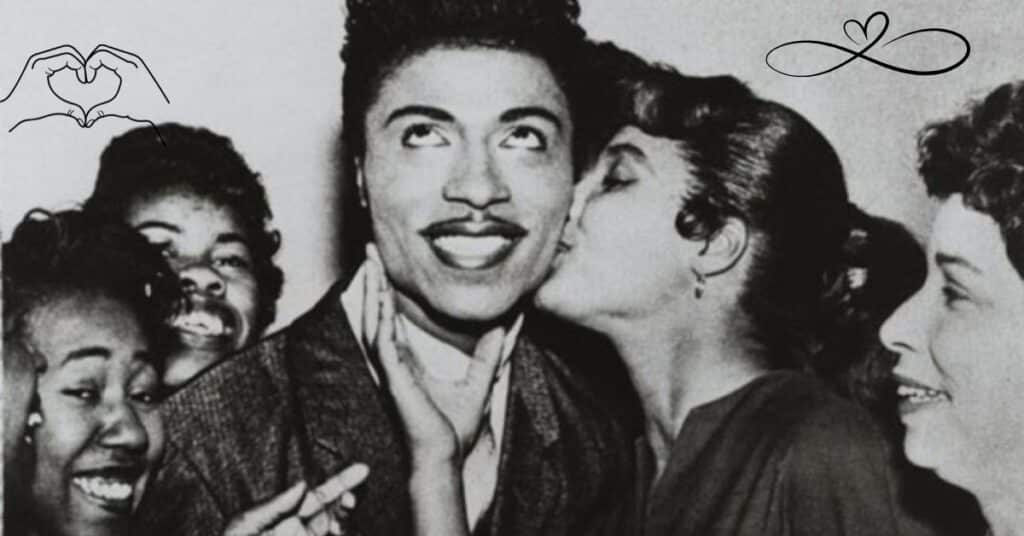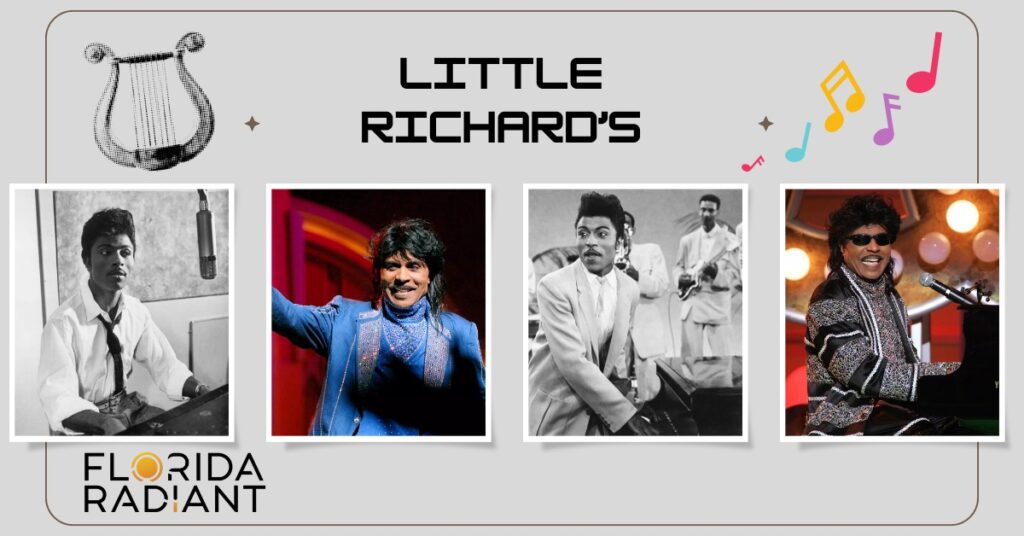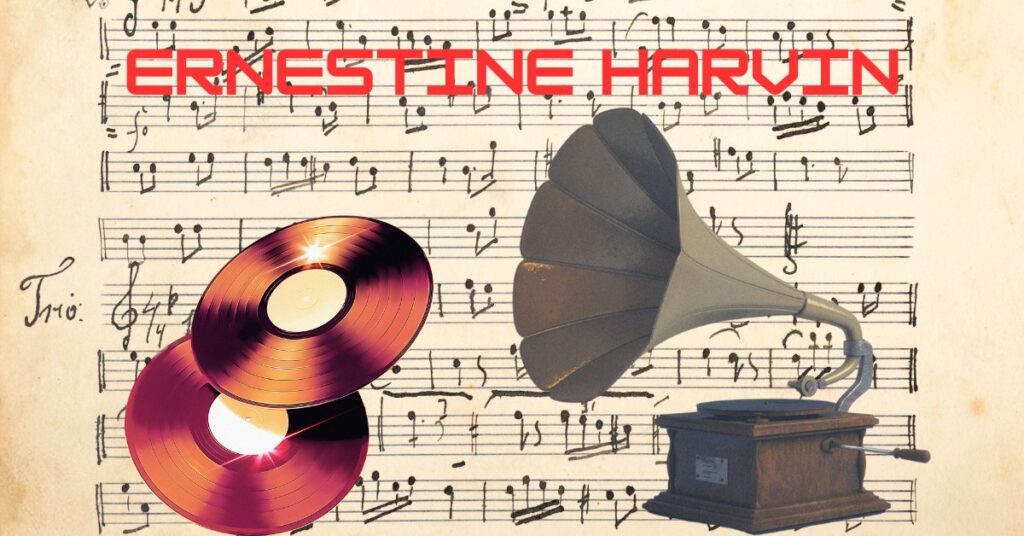Ernestine Harvin Campbell may be known as Little Richard’s ex-wife, but her story goes far beyond this association. Little Richard, widely celebrated as the “Architect of Rock and Roll”, forever changed music with hits like Tutti Frutti, Long Tall Sally, and Good Golly Miss Molly. While his public life was loud, bold, and revolutionary, Ernestine chose a quieter path. Her journey intertwined with the musician during a critical time in his career, yet she preferred privacy over fame, leaving much about her life unknown.
This article uncovers the story of Ernestine’s life before, during, and after her relationship with Richard Wayne Penniman, offering a fresh perspective on the woman behind the legend.
Through this exploration, we’ll look at how Ernestine and Little Richard’s lives connected and later separated, how she influenced him, and how she continued her own path after their marriage. Her legacy, like his, is significant, though often overlooked. Ernestine represents a tale of resilience, independence, and depth, qualities that helped shape Little Richard and continue to inspire others.
Ernestine Harvin Campbell
| Fact | Detail |
|---|---|
| Full Name | Ernestine Harvin Campbell |
| Known For | Former wife of Little Richard, also known as “Architect of Rock and Roll” |
| Date of Birth | October 31, 1935 |
| Date of Death | May 9, 2010 |
| Place of Birth | Washington, D.C., United States |
| Ethnicity | African and American |
| Religion | Christianity |
| Marriage to Little Richard | Married on July 12, 1959, divorced in 1964 |
| Adopted Son | Danny Jones Penniman, adopted during marriage |
| Reason for Divorce | Challenges due to Little Richard’s celebrity status and his struggles with sexuality |
| Career | Worked as a secretary in Washington, D.C. |
| Little Richard’s Iconic Songs | “Tutti Frutti,” “Long Tall Sally,” “Good Golly Miss Molly” |
| Little Richard’s Legacy | Rock and Roll Hall of Fame inductee, Lifetime Achievement Award |
| Influence on Music | Inspired artists like Elvis Presley, Otis Redding, and more |
| Religious Conversion | Little Richard’s religious beliefs influenced marriage; he later became an evangelist |
| Life Post-Divorce | Continued to live a private life focused on family and faith |
Early Life and Background

Born on October 31, 1935, in Washington, D.C., Ernestine Harvin was raised in a modest, close-knit community. She valued family and community connections and led a life centered on spirituality, quiet service, and personal values. Ernestine held strong Christian beliefs and focused on cultivating a grounded life.
Although her personal life was relatively private, Ernestine’s dedication to her work and family shaped her outlook, and she continued to prioritize these values, even after becoming connected to one of the most famous musicians of the 1950s rock music era.
Before her marriage to Little Richard, Ernestine worked as a secretary in Washington, D.C. Her career reflects her dedication to responsibility and routine, values that would contrast with the larger-than-life world she would soon experience with Little Richard.
Her steady career as a secretary highlighted a structured lifestyle, which often clashed with the chaos of celebrity life, but Ernestine remained true to her values, always aiming to maintain a stable and fulfilling life.
How Ernestine Met Little Richard
Ernestine Harvin met Little Richard at an evangelical rally in California in 1957. This rally, with its strong evangelical influence, provided a spiritual setting that both connected with on a deep level. The two shared common interests in Christian beliefs and community service, forming an immediate bond.
Little Richard, although a musical icon on stage, displayed a deeply personal and reflective side at that rally. They quickly grew close, with Richard captivated by Ernestine’s quiet strength and her ability to ground him amid the turbulence of fame.
In July 1959, after two years of friendship, Ernestine and Richard married, marking a new chapter in both their lives. Their relationship, initially based on shared faith and values, became a public spectacle due to Little Richard’s celebrity status. Fans were eager to see the rock and roll star settle down, yet few knew the challenges this brought to their relationship.
Marriage and Challenges Faced

The marriage between Ernestine and Little Richard highlighted the clash between fame and celebrity status and a desire for a private, family-oriented life. Ernestine struggled to adjust to Richard’s unpredictable lifestyle, which included extensive travel and long periods away from home.
The demands of being a cultural icon and pioneer in racial integration in music added immense pressure. Although Ernestine loved Richard deeply, she valued stability, a trait difficult to maintain in the chaotic world of rock and roll.
Richard himself wrestled with personal struggles, including his sexuality struggles and the tension between his faith and public persona. He was vocal about his sexual identity struggle, which created additional stress in their marriage.
In later years, Richard would speak openly about these issues in interviews with publications like People Magazine and the 3ABN Christian Network, admitting that his inner conflicts often took a toll on those around him. For Ernestine, these challenges made it hard to reconcile her love for him with the realities of their life together.
Ernestine’s Life Beyond Little Richard
Following their divorce in 1964, Ernestine Harvin Campbell stepped back from the public eye, choosing a life far removed from the spotlight. Her decision to keep a low profile allowed her to pursue her career and personal interests without the pressures of celebrity life.
Ernestine returned to her work as a secretary, where she found peace and fulfillment in routine and service, two constants that had always been important to her. Her life beyond Little Richard demonstrated her independence and resilience, qualities that enabled her to create a meaningful life on her own terms.
Ernestine never sought fame from her connection to Little Richard. Instead, she invested in her community, helping others without the need for recognition. Her choice to lead a private life has only added to her intrigue, as she represents a rare example of someone who valued personal growth and peace over the allure of fame. Ernestine’s life after Little Richard shows her commitment to the principles that guided her from the beginning: faith, family, and community.
Little Richard’s Impact on Music and Society

Little Richard, the self-proclaimed “Architect of Rock and Roll”, revolutionized music in the 1950s to 1970s rock star era. His influence extended beyond music to social change, breaking racial barriers in the civil rights movement and integrating audiences across America.
With songs like Tutti Frutti and Long Tall Sally, he influenced legends like Elvis Presley and Otis Redding. His flamboyant style, from androgynous fashion to energetic performances, challenged norms and paved the way for future artists, making him a trailblazer in both music and cultural identity.
Richard’s career continued to evolve, leading him to receive numerous accolades, including a Lifetime Achievement Award and a place in the Rock and Roll Hall of Fame. His influence reached into all aspects of pop culture, blending music with activism, gender expression, and racial integration. Little Richard’s impact on society is undeniable, leaving a legacy that Ernestine witnessed and experienced firsthand.
Divorce and Life After Marriage
Their divorce in 1964 was a mutual decision, with Ernestine recognizing the toll that Richard’s lifestyle and inner struggles took on their marriage. Richard later attributed part of the separation to his evangelism and religion, as he devoted more time to his faith. Ernestine, understanding the importance of maintaining her personal values, chose to part ways, leading a quieter life that contrasted sharply with Richard’s return to fame.
Even after their split, they maintained respect for one another. Ernestine’s choice to live privately allowed her to focus on her values, and Richard’s openness about his own life challenges added to the complex yet respectful bond they shared.
Little Richard’s Later Years and Final Legacy
In his later years, Little Richard experienced a resurgence, returning to the stage with a fresh sense of purpose. He achieved major honors, including induction into the Rock and Roll Hall of Fame and a Lifetime Achievement Grammy. By the time of his passing from bone cancer in 2020 at age 87, Richard had cemented his place in music history, not only as a musician but as an advocate for racial and social equality.
His death led to tributes from around the world, including heartfelt messages from artists and icons, reflecting his lasting impact. For Ernestine, these honors reaffirmed the greatness of the man she once loved, offering a bittersweet reminder of the life they shared.
Wrap Up :-
Ernestine Harvin Campbell’s life reflects resilience, dignity, and the power of self-respect. Her quiet existence beyond her relationship with Little Richard reveals a woman of strength who valued her identity and beliefs above fame.
While Richard’s journey led him to monumental success and complex struggles, Ernestine’s path serves as a reminder that true legacy comes in many forms. In her own way, she influenced the legacy of Little Richard, standing as a testament to love, respect, and the importance of remaining true to oneself.
Did Ernestine Harvin Campbell and Little Richard have children?
- They adopted a son, Danny Jones Penniman, who remained close to Richard until his passing.
How did Ernestine and Little Richard meet?
- They met at an evangelical rally in 1957, a common ground that sparked their connection.
Did Little Richard have other marriages?
- No, Ernestine was his only wife. Their marriage lasted from 1959 to 1964.
What was Ernestine’s life like after the divorce?
- Ernestine continued her work as a secretary and lived a private life, focusing on her faith and community.
How did Little Richard view his legacy in later years?
- Richard valued his contributions to music and society, often discussing his journey in interviews, aiming to inspire future generations.

William James is an experienced blogger with a passion for writing informative, easy-to-read content. As the voice behind Florida Radiant, William shares his knowledge on a wide range of topics, making complex ideas simple for readers. His goal is to provide valuable insights that are accessible to everyone, helping readers stay informed and engaged.







